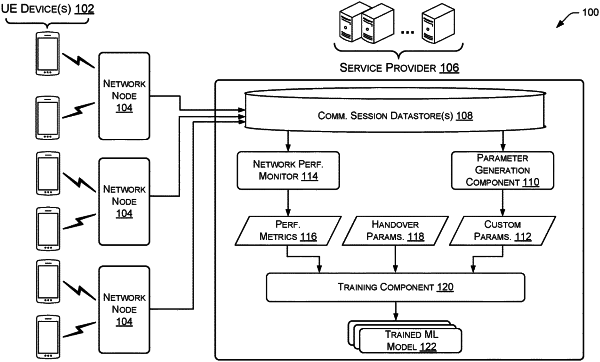| CPC H04W 36/0083 (2013.01) [H04W 36/06 (2013.01); H04W 36/08 (2013.01); H04W 36/165 (2013.01); H04W 36/22 (2013.01); G06N 20/00 (2019.01)] | 16 Claims |

|
1. A method, comprising:
receiving, by a network node of a wireless communication network, data associated with a plurality of connections, wherein each connection of the plurality of connections is associated with a communication session between a mobile device and a network resource within the wireless communication network;
determining, by the network node, a first value associated with a performance metric, based at least in part on a first subset of the data associated with a first frequency layer, wherein determining the first value comprises determining at least one of a first network utilization or a first network traffic volume associated with the first frequency layer, based at least in part on the first subset;
determining, by the network node, a second value associated with the performance metric, based at least in part on a second subset of the data associated with a second frequency layer, wherein the second frequency layer is different from the first frequency layer, wherein determining the second value comprises determining at least one of a second network utilization or a second network traffic volume associated with the second frequency layer, based at least in part on the second subset;
providing, by the network node, an input to a machine-learned model configured to determine at least one handover parameter for the wireless communication network, wherein the input is based at least in part on the first value and the second value and includes a difference between the first value and the second value;
determining, by the network node, a first handover parameter based at least in part on an output of the machine-learned model; and
configuring, by the network node, a first network resource of the wireless communication network, based at least in part on the first handover parameter.
|